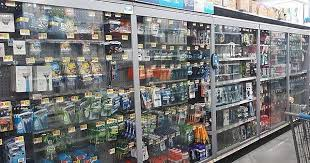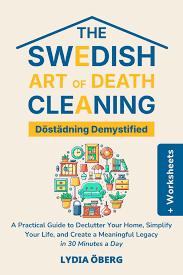An extensive article by staff writers at the
JewishTelegraphic Agency profiled a fairly recent project sponsored by the
Anti-Defamation League to study the efficacy of different approaches to combating anti-Semitism.
https://www.jta.org/2025/01/06/united-states/everyone-has-a-plan-to-fight-antisemitism-few-have-studied-what-actually-works
Some brief background. Anti-Semitism, either hatred of Jews or resentment of Jews, has been around since antiquity. Assigning definitions remains unsettled, but like Justice Stewart's assessment of pornography, you know it when you see it. Through history, it has had overt, even deadly expressions. In America, this has been mostly subtle. Our Founding Fathers created a policy of tolerance, continued by our immigration processes which at one time did not restrict entry of healthy Jews, mostly from central and Eastern Europe, arriving at a few ports in massive numbers. While American anti-Semitism has never been deadly, with a few isolated exceptions, America has had its pockets of anti-Jewish sentiment. Some displayed a public face with Klansmen and American Nazis carrying placards or hotels posting signs indicating that Jews could not obtain rooms there. Titans of capitalism sometimes operated under conspiracy theories of Jews having surreptitious methods for controlling the world. Others set quotas for access to elite schools or prime employment, though almost never zero representation. Amid overt or tacit hostility, episodes of welcome appeared, some more sincere than others. Tammany Hall in the early twentieth century solicited votes from newly franchised Jewish citizens, often asking them to identify their Rabbi who could help with organizing them. As growing American industry, financial markets, and professions expanded at about mid-century, college educated Jews had acquired valuable talent and energy to propel these enterprises forward. At the same era, the face of anti-Semitism shifted. The Dixie bigots never disappeared. But there arrived a new presence in America. An Islamic element, wealthy and influential by control of essential oil markets, took the position that dhimis like Jews should never have sovereignty. Anti-Israel became the marker of Anti-Semitism, an intersectionality that once again threatens Jews physically, not just in America but everywhere from Munich to Israeli buses to American public places. In the past year, as Israel tries to contain very real threats and American Jews in alliance with most of our national elected officials decry this return of animosity, that previously contained Anti-Semitism has gained popular support among American progressives and minorities. The Internet has offered everyone parity of expression on their preferred platform with little prospect of negative consequences such as loss of employment. Even when adverse consequences can be applied, leaders of our great Universities have been reticent to enforce protection to Jewish students and other members of the visibly Jewish public.
In response to a deadly anti-Semitic event, the kangaroo trial followed by the lynching of Leo Frank in Atlanta in 1913, a group of philanthropists banded together to found what became a legacy Jewish agency, now known as the Anti-Defamation League. At the time, and today, public unflattering stereotypes of Jewish people in public forums abounded. This era also brought into existence many public service agencies, Jewish, secular, sectarian, economic. Unions gained prominence. The Scouts, NAACP, our Federation system for pooling and distributing donations, Lions Clubs, and many other sources of philanthropy and advocacy trace their origins to that era. As we advanced forty years, Jewish acceptance in America had become established, though African-Americans and other minorities had not done as well. Advocacy through the ADL expanded for all groups that had been treated poorly, a source of core values, but later a source of friction as allies with more success found areas of divergent interests. And that is a quick summary of a hundred years of advocacy.
Next an anecdote. My state university offers courses to seniors through its Osher Institute affiliation. During the pandemic, I enrolled in a Zoom series on contemporary issues. Each week, the three organizers would invite somebody of personal or organizational prominence to present their activities for about an hour, then open Zoom to questions. Among those presenting was a representative of the local ADL chapter, either the director or assistant to the director. She focused on her organization's educational efforts that spanned over a hundred years, a source of great pride to her. Two questions came from the audience that stayed with me, as the presentation took place just after the pandemic's peak but before the October 7 massacre with its outpouring of Anti-Zionist public canards. One question went something like, if you are so experienced at this and doing the same for a hundred years, why do we still have Pittsburgh and Charlottesville? Do you have alternative activities that may be more effective? The other question came from somebody more familiar with the ADL and how it has engages in its advocacy mission. How has the agency's directions changed as leadership passed from Abe to Jonathan? Both very legitimate questions. And she groped for answers that a group of highly educated seniors retired from some very upper-tier professions realized she did not have.
While educated people have an advantage over the ignorant, the most educated around attend universities whose admissions offices turned me down. There are imprints, scripting, opportunism, In other spheres we have warning labels on tobacco and alcohol products, public service announcements, and people collecting outcome data. Education did not reduce smoking and smoking-related illness in America. Taxation and restriction of opportunities to smoke in public places did. A good law will outperform good intentions every time. Drunk driving injuries have declined because of enforcement of laws, not because people with DUI were forced to attend classes. It is likely the same with prejudice. It was OK to deny black people restaurant seating in Alabama when the law permitted it, taboo when there are real penalties for people who try. And with the change in mandated behavior comes an acceptance of the new behavior as the right path. Smoking bad, drink judiciously, everyone gets seated at every restaurant in America. Sometimes it is best to force people to do what they should be doing without being compelled by laws and penalties.
The JTA article, reprinted in The Forward where I read it, poses a similar question to those at the Zoom ADL seminar. How effective is education as a tactic to deter anti-Semitism? Do some agency heads like Jonathan at ADL or Ted at AJC, both with extensive political backgrounds in the Democratic Party, come to their current responsibilities with imprints that Abe and David, their predecessors of very long-standing tenure did not have?
That becomes the heart and soul of the extensive JTA analysis. ADL, for all the sacred cows that it has protected from its shechita knife, engaged somebody who asked the same question that the person at the Zoom seminar asked. If we are so good at this, why can't we avert the cycles of anti-Semitism in whatever form we find them? Maybe the focus on public education has become that beaten dead horse. If it needs replacement, what should the more efficacious approach be?
While headquartered at the ADL, something like this requires a wide net of collaboration with independent thinkers whose careers do not depend on saluting the sponsor. Across America and beyond, there are institutes, universities, publications, and other organizations that conduct objective research on anti-Semitism. Findings can be a great resource, the justification for changing direction. Or when legacy organizations have been around forever, inconvenient discoveries can be resisted with the full structure and force of the agency. The ADL VP profiled had begun assembling this network, though the role of the ADL, or AJC as a parallel advocate with comparable vast resources, seemed a bit amorphous given the scale of the project. Some institutions were mentioned. One that was not is one to which I donate, Indiana University's Institute for the Study of Contemporary Anti-Semitism. These scholarly enclaves have existed for a considerable time. Their faculty, as most are university subdivisions, have bibliographies, tenure, and grants. However, any alternatives to mass public educational efforts have not been very well publicized, let alone adopted in a coordinated way by our legacy advocacy agencies.
Best practices research, now a pillar in my own medical profession, has produced copious guidelines for how to manage a wide variety of medical challenges. They are presented with a scoring system that includes the quality of the data that generates the recommendations and the strength of expert consensus. I think that would also be the model for social policy, whether creating best practices for policing to avoid some of the unfortunate incidents and for assessing the impact of interventions to mitigate anti-Semitism. It is not likely that blaming Jews for the woes of other populations will disappear, but they can be marginalized from the public sphere in a better way than what we experience now. I think enough evidence has accumulated that defaulting resources to public education has not brought the desired outcome. What might replace this, with a better outcome as the end in mind, remains uncertain. The research already exists, both in how to recognize best practices and how to assess alternatives in an objective way. Coordinating this effort seems more nascent.















